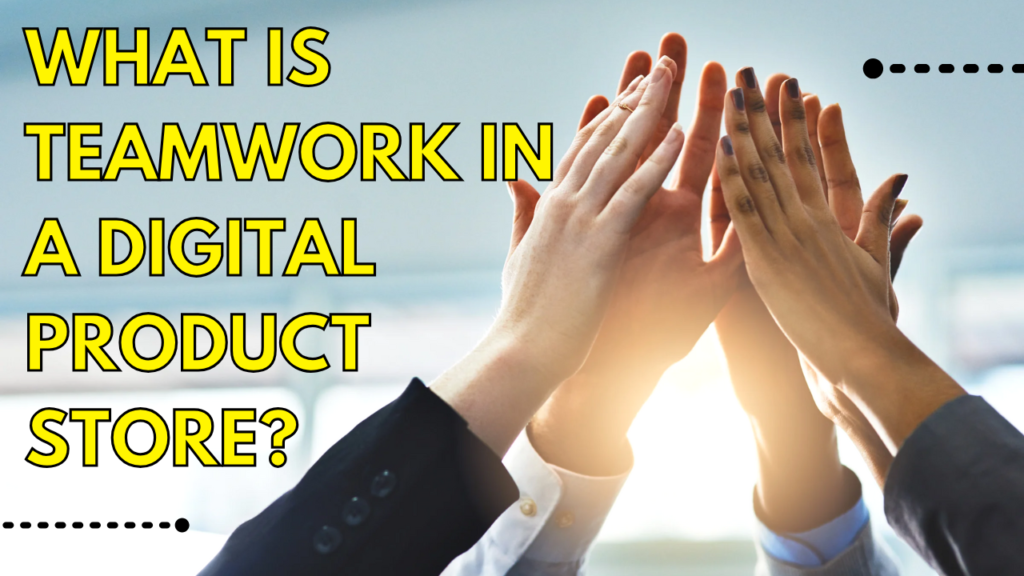Teamwork is at the heart of any successful business, and in a digital product store, where creativity, innovation, and efficiency are essential, fostering a culture of teamwork can make all the difference. However, how can this cooperative atmosphere be fostered? In this article, we’ll walk through the benefits of teamwork, steps to build a culture of collaboration, and ways to overcome common challenges.
Table of Contents
Importance of a Collaborative Culture

Having a collaborative culture in a digital product store is not just a “nice-to-have”; it’s critical. Whether your store sells software, apps, or other digital products, collaboration among team members can lead to greater efficiency, creativity, and customer satisfaction.
Boosting Productivity through Teamwork
When employees work well together, they leverage each other’s strengths, improving overall productivity. Tasks that would take one person days to complete might be handled faster when a team collaborates efficiently. Think of it like rowing a boat—when everyone rows in sync, the boat moves forward smoothly.
Enhancing Creativity and Innovation
Teamwork allows diverse ideas to blend, creating innovative solutions. When people with different perspectives come together, brainstorming sessions lead to new ways to approach challenges and opportunities. In a digital product store, where innovation is key to staying competitive, this can provide an edge over competitors.
What is Teamwork in a Digital Product Store?

In a digital product store, teamwork goes beyond just working together. It involves continuous collaboration, problem-solving, and a shared goal of delivering the best products and services to customers.
Defining Digital Collaboration
Digital collaboration means using tools and platforms that allow team members to communicate, share files, and work on projects regardless of their physical location. This is particularly important in a world where remote work is becoming the norm.
Key Components of Successful Teamwork
Successful teamwork involves trust, communication, mutual respect, and clear objectives. Each team member should know their role and how it fits into the larger goal, ensuring everyone moves in the same direction.
Key Benefits of Building a Teamwork-Oriented Culture
A culture focused on teamwork provides several benefits to your digital product store, from better decision-making to higher employee satisfaction.
Improved Problem Solving
When people work together, they bring multiple viewpoints to the table, which leads to more comprehensive solutions. Diverse teams can identify issues from various angles, ensuring problems are tackled from all sides.
Higher Employee Satisfaction
When employees feel they are part of a team, their job satisfaction tends to increase. They are more likely to feel supported and valued, leading to higher morale and less turnover.
Faster Decision Making
Teams that work well together can make decisions more quickly, especially when they are cross-functional.
Cross-functional Team Dynamics
When departments work together, whether it’s marketing, development, or sales, the decision-making process speeds up, as different perspectives are considered simultaneously, leading to faster execution.
Steps to Build a Teamwork Culture

Building a teamwork culture requires intentional steps and dedication from leadership and employees alike. Here’s how you can start fostering a culture of collaboration.
Defining Clear Roles and Responsibilities
Each team member’s understanding of their roles is essential. When roles are clear, there’s less confusion, and everyone understands how they contribute to the success of the team.
Role of Leaders in Promoting Teamwork
Leaders play an essential role in promoting teamwork. They need to set the tone by emphasizing the importance of collaboration and ensuring that every team member feels included.
Fostering Open Communication
Effective communication is the cornerstone of any successful team. Regular check-ins, transparent discussions, and open dialogue can prevent misunderstandings and ensure everyone is on the same page.
Encouraging Regular Feedback
Encouraging feedback—both positive and constructive—allows teams to improve continuously. It also fosters an environment where people feel comfortable sharing their thoughts.
Promoting Collaboration Tools
In a digital product store, tools like Slack, Microsoft Teams, and Asana can help keep everyone connected, whether they’re in the office or working remotely.
How Digital Tools Enhance Teamwork
Digital tools streamline workflows, keep tasks organized, and ensure that communication is seamless, which is critical for remote or distributed teams.
Overcoming Challenges in Building Teamwork Culture
Building a culture of teamwork isn’t without its challenges, but with the right strategies, these obstacles can be overcome.
Managing Remote Teams
Remote teams often struggle with communication and connection, but regular virtual meetings and check-ins can help bridge this gap.
Best Practices for Virtual Teamwork
Use video calls for important discussions, set clear expectations for availability, and ensure everyone has access to collaboration tools that allow for seamless remote communication.
Dealing with Conflict in Teams
Conflict is inevitable when working with others, but the key is addressing it quickly and constructively.
Conflict Resolution Strategies
Encouraging open communication, listening to all parties involved, and finding common ground can help resolve conflicts before they escalate.
The Role of Leadership in Cultivating Teamwork

Leaders are the foundation of a teamwork-driven culture. By setting clear expectations, leading by example, and promoting inclusivity, they create an environment where teamwork thrives.
How Leaders Set the Tone for Teamwork
Leaders should set an example for their teams to follow. This includes collaborating openly, giving and receiving feedback, and supporting team members.
Leading by Example
Leaders who actively participate in team efforts, show appreciation for collaboration, and help resolve conflicts demonstrate the importance of teamwork to the rest of the organization.
Also Visit:
Maximizing Efficiency with Help Scout in Your Customer Service Strategy
How Can Packhelp Help You Design Packaging That Reflects Your Brand?
How Can Bright Data Improve Your Online Research Efficiency?
The Ultimate Instapage Review: Features, Benefits, and More
Time Doctor: The Best Tool for Managing Remote Employees
The Benefits of Using Trainual for Your Business
Conclusion: Building a Strong Foundation of Teamwork
Creating a culture of teamwork in your digital product store doesn’t happen overnight, but with clear roles, open communication, and strong leadership, you can build a collaborative environment where creativity, productivity, and employee satisfaction thrive.
Frequently Asked Questions.
Q. What are the key elements of effective teamwork?
A. Effective teamwork is built on trust, communication, and mutual respect. Clear goals and roles, along with a commitment to collaboration, are essential.
Q. How can I encourage teamwork in a remote team?
A. To encourage teamwork in a remote team, use collaboration tools, schedule regular check-ins, and create opportunities for informal interactions to build rapport.
Q. What tools can help foster collaboration in my digital product store?
A. Tools like Slack, Trello, Asana, and Zoom can help facilitate communication and project management, making teamwork smoother in a digital setting.
Q. How do you manage conflict in a team environment?
A. Managing conflict involves addressing issues early, encouraging open dialogue, and finding a resolution that works for all parties involved.
Q. Why is leadership crucial in teamwork?
A. Leadership sets the tone for teamwork by promoting a collaborative culture, modeling positive behaviors, and ensuring that team members feel supported and valued.














